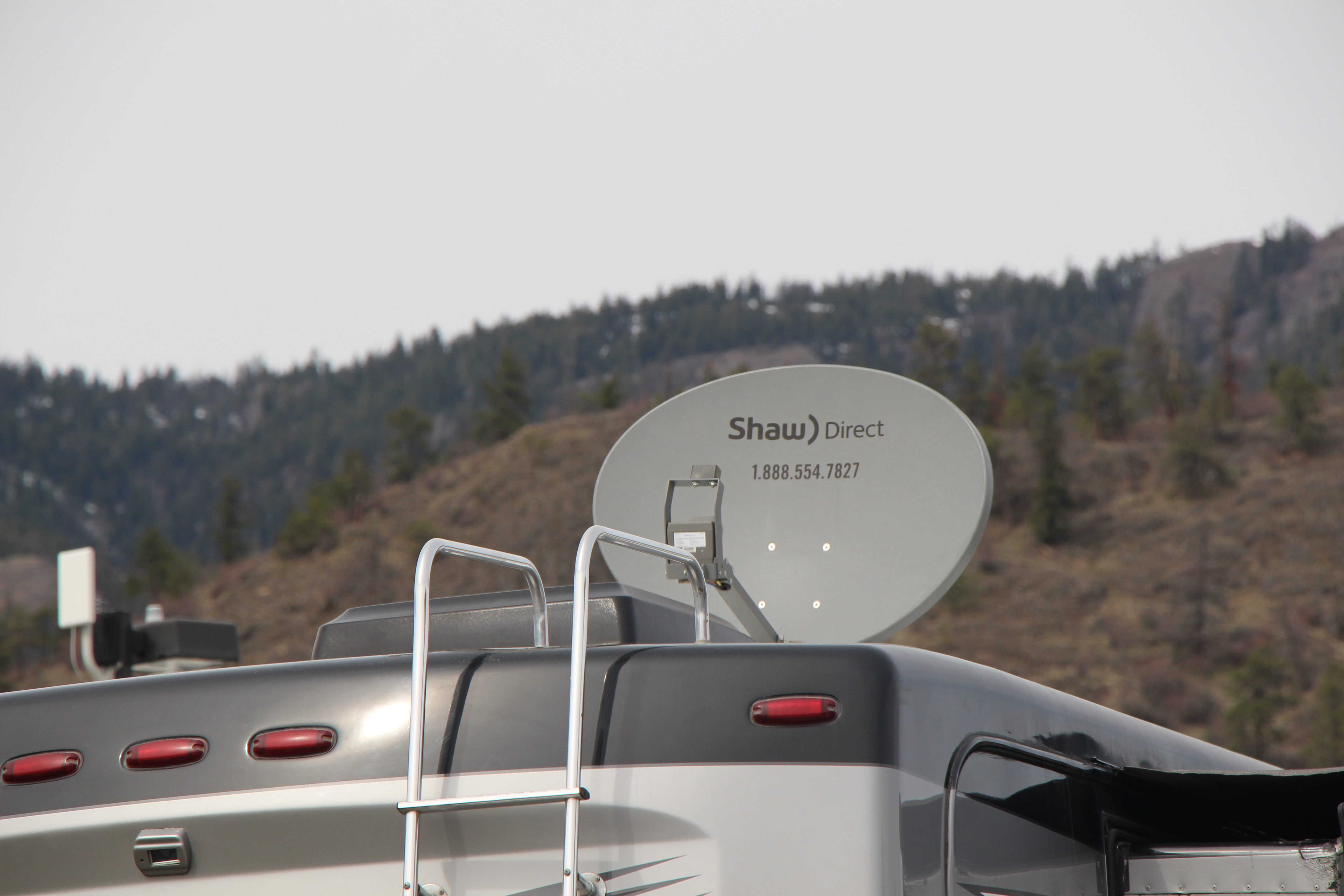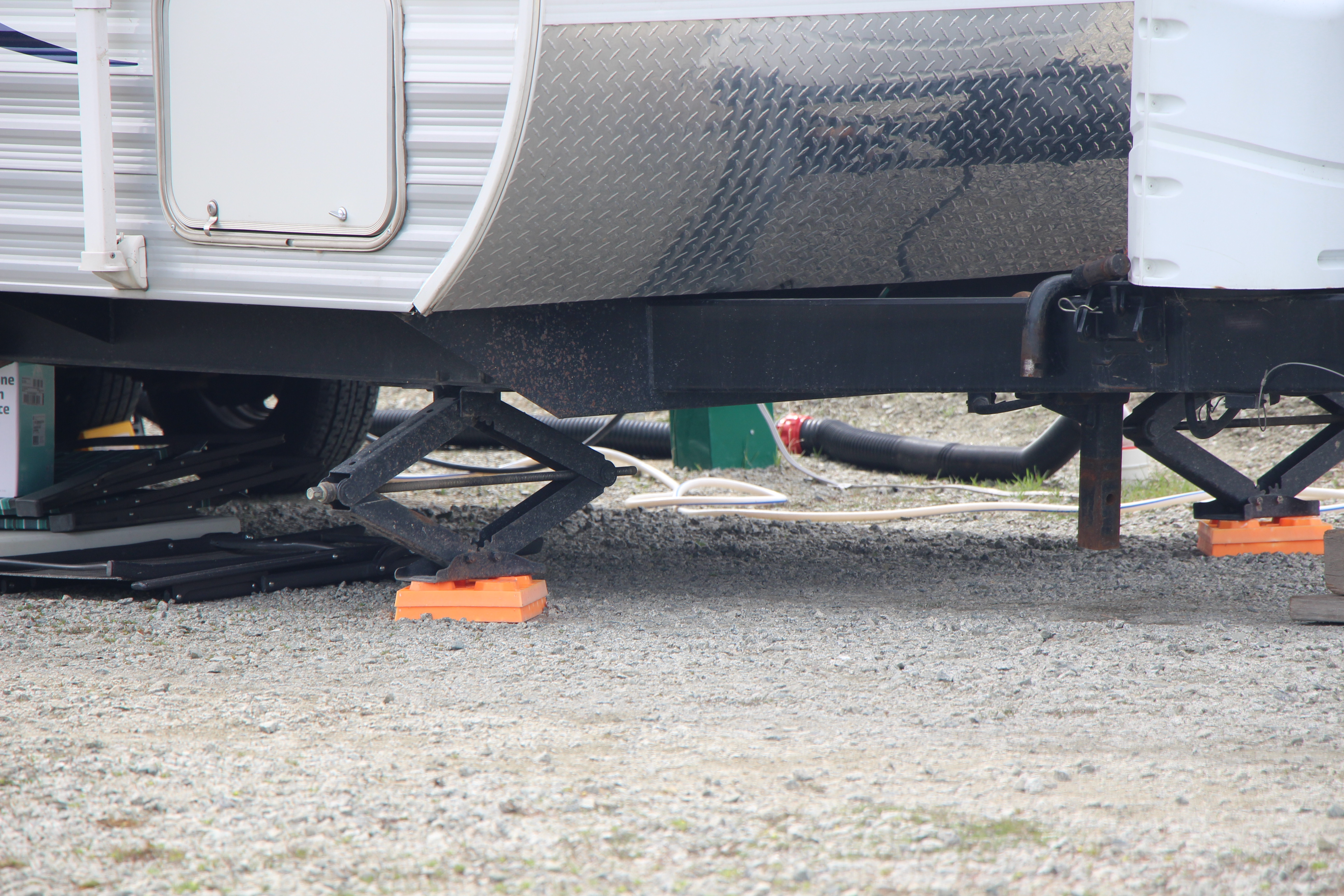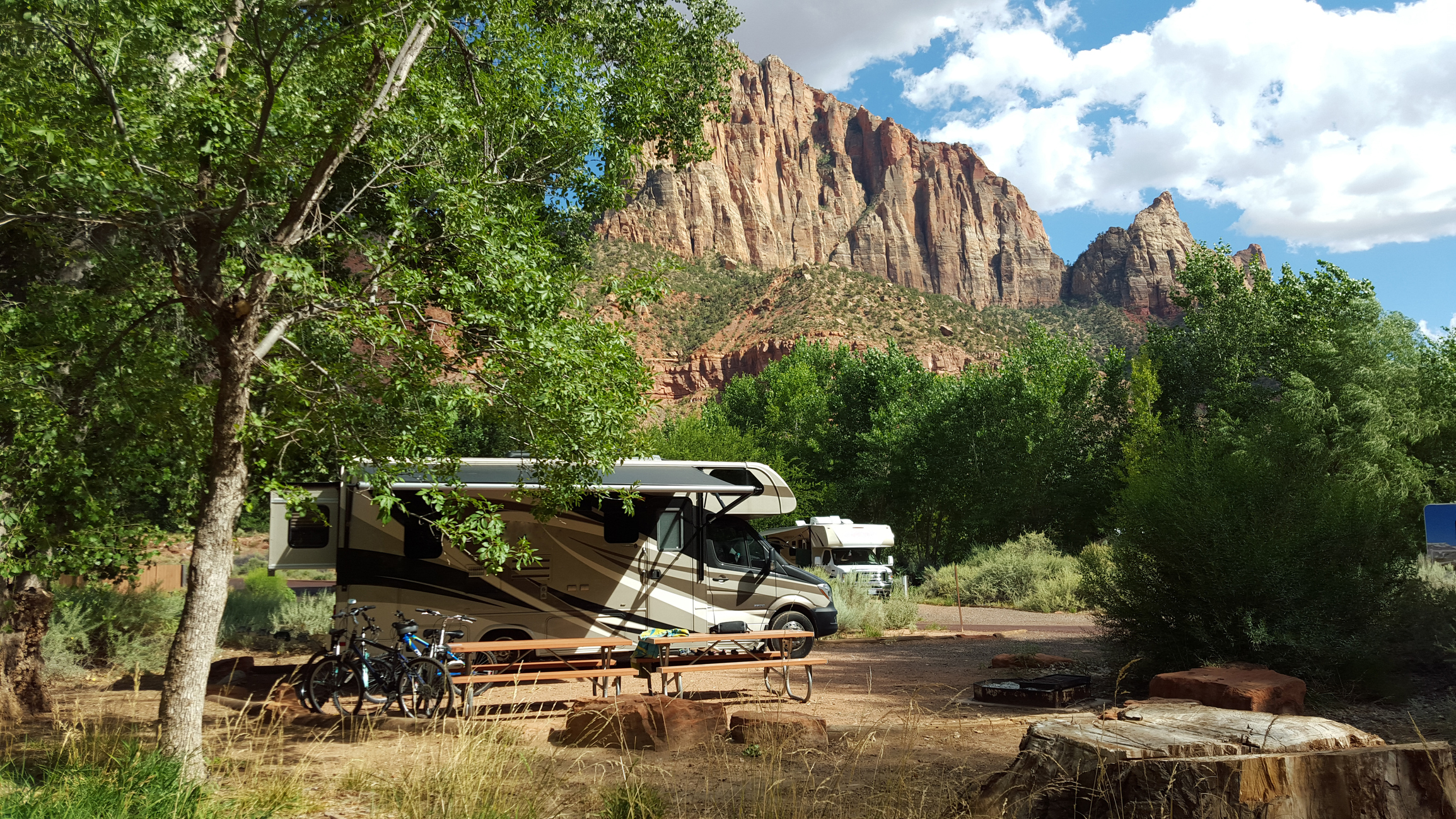Breaking down camp and readying your recreational vehicle to pull out can be a busy and hurried time. The majority of people do not have a written checklist to ensure that all the necessary tasks are addressed. Instead, they rely on their memory built up from having done this many times. Though that might seem a reasonable approach, it does not explain the countless mishaps that RV owners experience during departure each year. Unfortunately, many of these “failure-to-check items” end up costing big dollars to repair or replace.

The author and his grandson prepare for a trip. Photo: Peter Mercer
So, let’s take a look at 10 of the most commonly “forgot to check items.”

Photo: Peter Mercer
Non-retracted TV Antennas
Whether you have a TV off-air crank-up antenna or a satellite dish, either or both must be parked in their lowered position before heading out. As many have found, rooftop appendages, like extended antennas, do not fare well with overhead obstructions and highway-speed air resistance. Not only the antenna can be severely damaged, but the rooftop structure can also be compromised. Do not rely on in-dash indicator lights. A visual check from outside the RV should be made. This can be part of your pre-departure walk-around.

Photo: Peter Mercer
Disconnect All Electrical and Plumbing Umbilical Lines
Unplugging and disconnecting from the service pedestal may seem relatively elementary. However, I have witnessed a number of exiting RVs departing their campsite with an explosion of hoses and wires trailing behind. Damage to park property, RV electrical cable, electrical compartment, water bay, basement doors and the RV body are some of the costly repairs often incurred. Additionally, torn electrical cables and components pose an immediate danger. Regardless of what order you perform the disconnection of services, the walk-around will prevent some big hassles.
Latch All Outside Compartments Tight
Storage bin doors may look closed and secure, but are they? RV Basement locker doors are frequently damaged or torn off from opening while traveling if they’re not firmly latched. Collateral damage is also possible to the body of the RV and passing vehicles. The only real way to ensure a locker door is firmly latched is to push on it. If a click is heard, it is fully latched. Pull each door also to double-check.

Photo: Peter Mercer
Confirm Storage of All Stabilizer Jacks
Whether your level jacks are pin, screw or hydraulic, ensure that all are in their retracted and stored position. Hitting the road with one or more of these down has a host of possible bad outcomes. Avoid totally destroying the jack, damaging the frame structure, causing hazardous sparks and creating liabilities for surrounding traffic. Don’t rely on warning indication lights. Lights and microsensors can fail. Physical viewing each takes no time and can be carried out during the walk-around.
Turn Off the Freshwater Pump
Whether you are towing your trailer or driving a motorhome, you won’t be able to hear the pump if it is running. If you ever think a hose might come loose in your RVs plumbing, you will have to believe it would do it while you’re rocking, rolling, and bumping down the road. It is not uncommon for such a happening. A runaway water pump will soon exhaust the water supply and will not last long once it runs dry. A new freshwater pump will soon end up on your shopping list. Cutting the 12-volt power to the pump before leaving will alleviate the issue totally.

Photo: Peter Mercer
Plan Your Campground Exit Route
Many campgrounds have multiple routes to reach the exit. Often, with many of today’s larger RVs, navigating down the campsite roads can be challenging. In addition, some people just don’t understand that their car should not be parked halfway across the roadway. Additionally, low tree branch clearance in some parts of the park can cause damage to the roof as well as awnings and antennas. I’ve owned motorhomes for thirty-some years, and I’ve always made a point of assessing my park departing route the night before leaving. I take a stroll around the park checking the best route. I look for the corners affording the best turn radius. I look for overhead clearance and avoid low bush areas that may cause scratches on the coach sides. A little time spent, a lot of heartaches saved!
Make the Interior Road Ready
First, lock the refrigerator door for travel. Then, secure all internal doors. Dishes, cutlery, small appliances and the like are fine scattered about the galley while in camp. Not so while traveling. An automatic coffee maker can be bounced onto the floor and broken or become a missile in an emergency stop. Smashed dishes and other items that can break can be costly to replace, not to mention the danger of airborne items within a motorhome. Stacking dishes with a sheet of non-skid material between each will not only protect them against a rough vibrating ride but will also keep them quite quiet. Small non-mounted appliances and the like can be secured in a drawer or location that keeps them contained.

RV Roof Vent
Close Roof Vents
These should be closed while traveling. Leaving roof vents open while driving can damage them. Highway speed, wind resistance and overhead tree branches can be unkind to these small hatches. Close and latch all vents. If you have the Fantastic Ceiling Fan/Vent, be sure to turn off the automatic setting. Rain or the morning dew may have it briefly idle.
All Awnings Retracted and Secure
Given the size of patio awnings, it’s doubtful one would miss storing this big accessory. But the window awnings are a different story. I have seen RV owners, including yours truly, miss the retracting of a window awning. Thankfully a look down the coach sides via the mirrors reveal the issue from the driver’s seat. However, the overhead door awning on a forward-placed doorway on a diesel pusher can’t be seen in the same manner. These, if left extended while traveling may get warped out of shape, torn off or damaged by a tall vehicle like a semitrailer. Adding this to your walk-around is the simple answer to avoid such issues.
Fully Air Up Before Attempting to Move
For diesel pushers with air brakes and suspension, the parking brake will fail to release until there is sufficient air pressure in the system. Additionally, you must wait a minute or so to allow the air suspension to rise to the travel position. Failure to do this can present two issues. If your suspension is at the bottom of its travel, turning the steering wheel sharply to either side may cause the tire to strike the fender. This can take a chunk of the fender flare in the body. Also, when at the bottom-most position the shorter drive shaft of a DP presents an acute angle at both driveline universal joints. Repeated high torque on the u-joints at this angle can reduce the life of these.
Well, perhaps a written checklist might be a good idea. After all, pilots use them and they even include what would be obvious “must-dos” like “flaps down” for takeoff or landing.
“Fasten your seat belts, RV One cleared to depart site 23 via the third crossroad and direct to the exit.” Have a great trip and enjoy a hassle-free season.
Peter Mercer — Avoiding Issues Does Not Just Happen, It’s Planned









